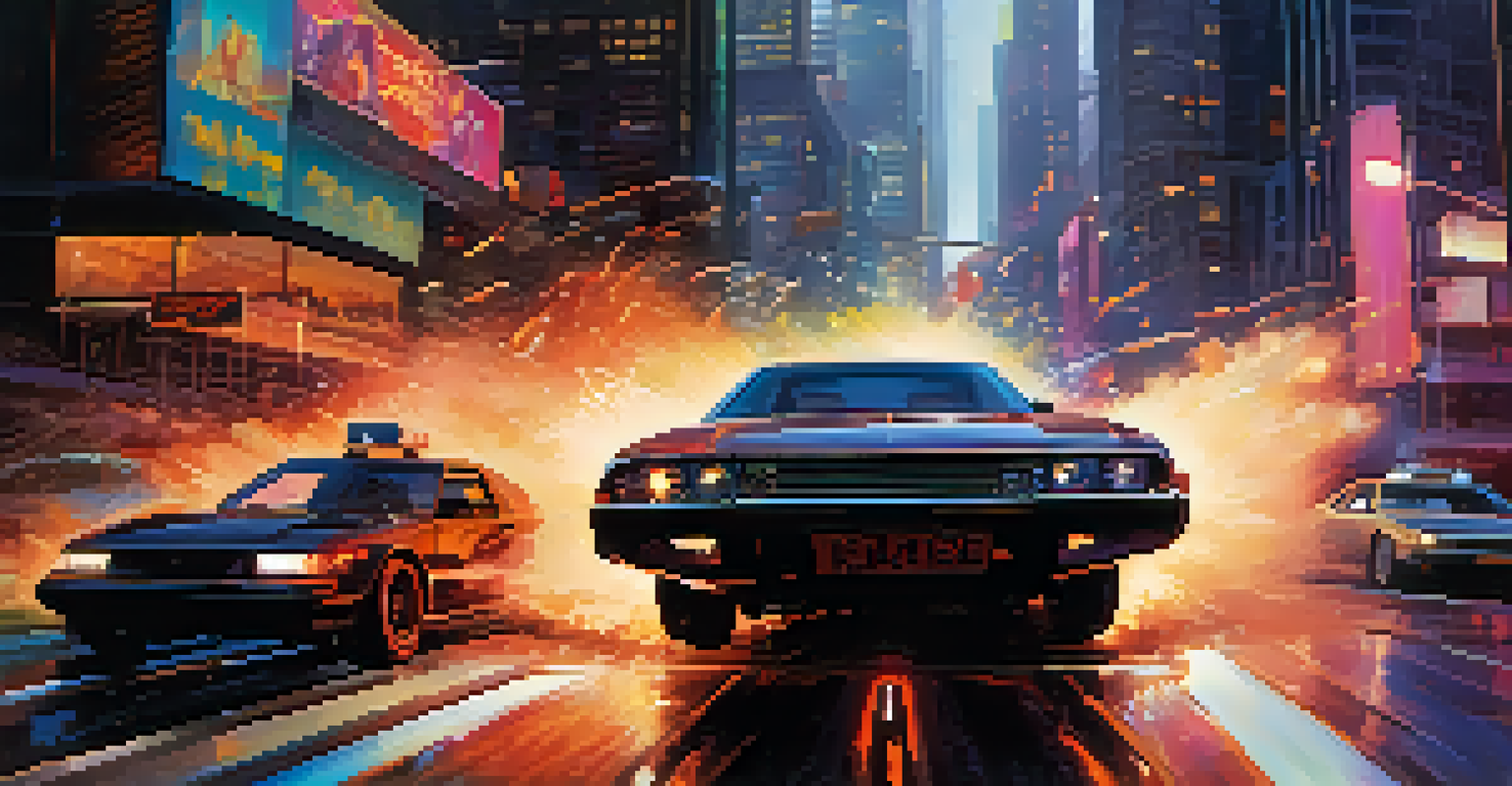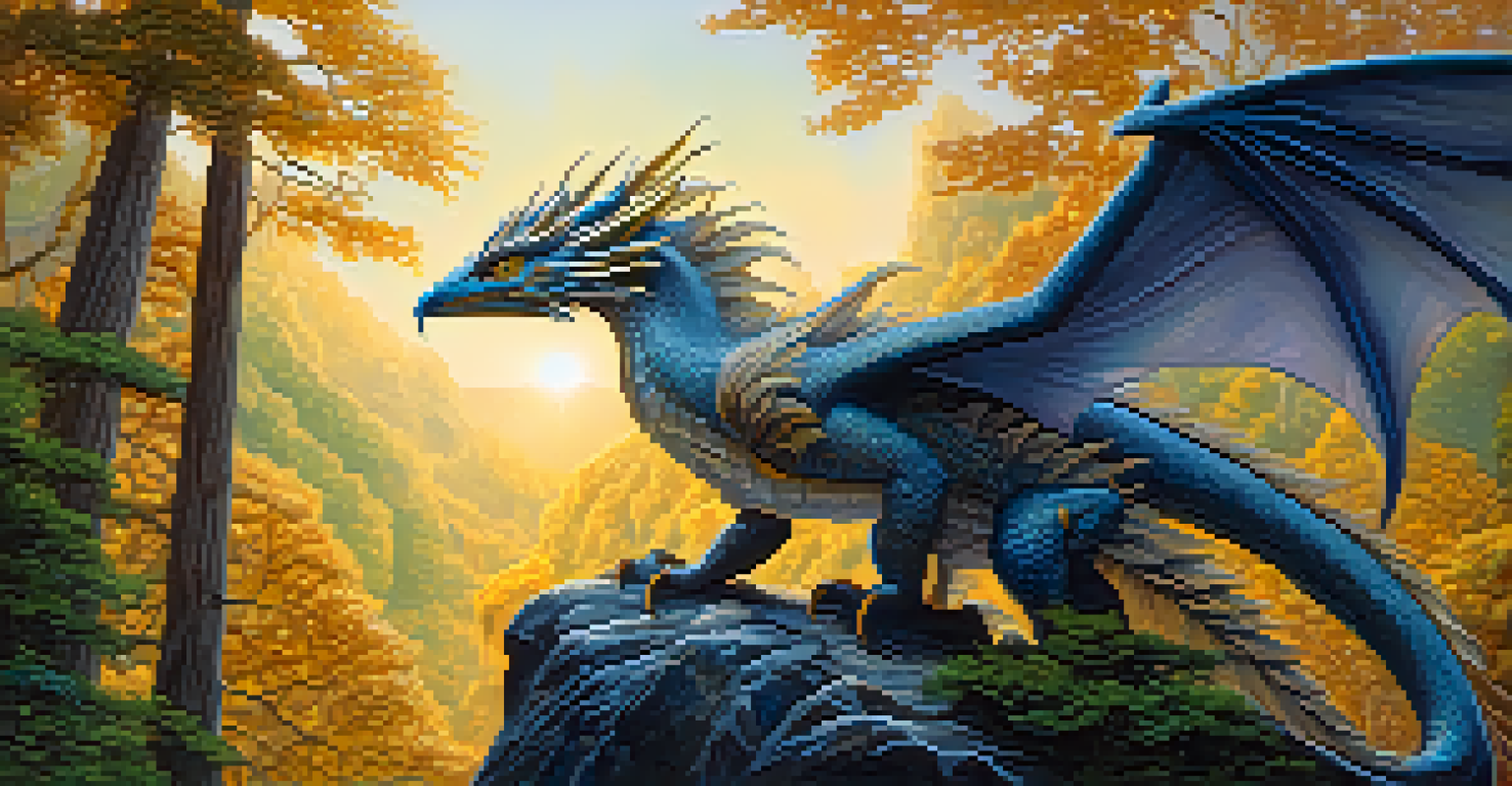How Visual Effects Enhance Storytelling in Modern Cinema

The Role of Visual Effects in Modern Storytelling
Visual effects, or VFX, play a crucial role in modern cinema by enhancing storytelling. They allow filmmakers to create immersive worlds and experiences that engage audiences on a deeper level. Without VFX, many beloved films would lack the visual depth that draws viewers into their narratives.
Visual effects are not a replacement for storytelling; they are a tool to enhance it.
For instance, in movies like 'Avatar,' the stunning visuals not only showcase a fantastical world but also serve to amplify the emotional stakes of the story. By creating vibrant landscapes and lifelike creatures, VFX helps to transport viewers into the characters' journeys. This integration of visuals and storytelling fosters a more profound connection between the audience and the film.
Ultimately, VFX acts as a bridge between imagination and reality, enabling filmmakers to tell stories that might otherwise be impossible. As technology advances, the potential for storytelling through visual effects continues to grow, pushing the boundaries of what can be achieved on screen.
Creating Emotional Impact Through Visuals
Visual effects can significantly enhance the emotional impact of a film, allowing viewers to feel what characters are experiencing. For example, the use of slow-motion effects can amplify moments of tension or joy, pulling the audience into the emotional core of the scene. These techniques help viewers connect with characters on a more visceral level.

Consider the heart-wrenching scene in 'The Lion King' where Mufasa falls. The dramatic visuals, combined with the music and sound design, create a powerful emotional experience that resonates with the audience. This kind of visual storytelling can evoke feelings of sadness, joy, fear, or excitement, making the narrative more memorable.
VFX Enhances Storytelling Depth
Visual effects create immersive worlds and emotional connections, making narratives more engaging for audiences.
In essence, the right visual effects can act as a catalyst for emotional responses, deepening the audience's investment in the story. When used effectively, they can transform a simple scene into a moment that lingers in the viewer's mind long after the credits roll.
Building Immersive Worlds with Visual Effects
One of the most impressive aspects of visual effects is their ability to create immersive worlds that captivate viewers. Films such as 'Inception' and 'The Matrix' demonstrate how VFX can bend the rules of reality to tell complex stories. These worlds often have their own unique rules and aesthetics, making them intriguing and engaging.
The magic of cinema is that it can take you to places you've never been, and visual effects are a key ingredient in that magic.
By constructing elaborate environments and scenarios, VFX allows filmmakers to explore themes and ideas that might not be possible in the real world. This artistic freedom encourages creativity and innovation, resulting in stories that are visually and intellectually stimulating. Audiences are drawn into these fantastical realms, eager to discover what lies beyond each twist and turn.
In this way, visual effects not only enhance the narrative but also invite viewers to experience a new reality. They create a shared experience that transcends ordinary life, making the film a portal into other dimensions of storytelling.
Enhancing Action Sequences with Visual Effects
Action sequences are often the most exhilarating parts of a film, and visual effects elevate them to new heights. By incorporating VFX, filmmakers can create jaw-dropping stunts and breathtaking visuals that would be impossible to achieve practically. This not only keeps audiences on the edge of their seats but also adds an element of spectacle to the storytelling.
Take, for example, the 'Fast & Furious' franchise, where high-octane car chases and explosions are elevated through VFX. These scenes are crafted to maximize excitement, showcasing the characters' skills while pushing the limits of reality. The seamless integration of VFX ensures that the action feels both thrilling and believable.
Emotional Impact Through Visuals
The use of visual effects amplifies emotional moments in films, allowing viewers to connect deeply with characters.
Ultimately, visual effects enhance the pacing and excitement of action sequences, making them more engaging for the audience. This combination of storytelling and spectacle is what keeps viewers coming back for more, eager to see how the next action-packed moment unfolds.
Visual Effects in Character Development and Design
Visual effects play a vital role in character development, particularly when it comes to fantasy or sci-fi genres. Characters that require unique designs or transformations often rely on VFX to bring them to life. For instance, in 'Guardians of the Galaxy,' characters like Groot and Rocket are brought to life through a combination of CGI and motion capture technology.
These techniques allow filmmakers to create characters that resonate with audiences while also pushing the boundaries of what is visually possible. The emotional depth and personality of these characters are enhanced through intricate details made possible by VFX. This not only adds to the storytelling but also allows for a more immersive experience.
As a result, visual effects can transform how viewers perceive and connect with characters, making them more memorable and relatable. This blending of technology and storytelling enriches the narrative, allowing audiences to invest emotionally in the characters' journeys.
The Evolution of Visual Effects in Cinema
The evolution of visual effects in cinema has been nothing short of remarkable. From the early days of practical effects to today's cutting-edge CGI, the technology has transformed how stories are told on screen. This journey reflects not only advancements in technology but also the evolving expectations of audiences.
As filmmakers pushed the boundaries of what was possible, iconic moments in cinema emerged that showcased the power of visual effects. Movies like 'Jurassic Park' revolutionized the industry with lifelike dinosaurs, setting a new standard for realism in film. Each technological leap has opened up new storytelling possibilities, allowing for richer narratives and more intricate worlds.
Balance VFX with Narrative
A thoughtful integration of visual effects ensures they enhance rather than overshadow the story being told.
Looking ahead, the future of visual effects holds even more exciting prospects. As technology continues to advance, filmmakers will have the tools to create even more immersive and engaging stories, further enhancing the art of storytelling in cinema.
Balancing Visual Effects and Storytelling
While visual effects are powerful tools for storytelling, balancing them with the narrative is crucial. Over-reliance on VFX can lead to films that prioritize spectacle over substance, leaving audiences feeling disconnected. It's essential for filmmakers to remember that the story should always come first, with visuals serving to enhance, not overshadow, the narrative.
A great example of this balance is found in 'The Lord of the Rings' series, where visual effects elevate the epic battles and landscapes without detracting from the character-driven story. The filmmakers skillfully integrated VFX into the narrative, ensuring that the visuals complemented the emotional arcs of the characters.

In conclusion, a thoughtful approach to using visual effects can lead to a more cohesive and engaging film. By prioritizing storytelling while utilizing the power of VFX, filmmakers can create memorable experiences that resonate with audiences long after the film ends.